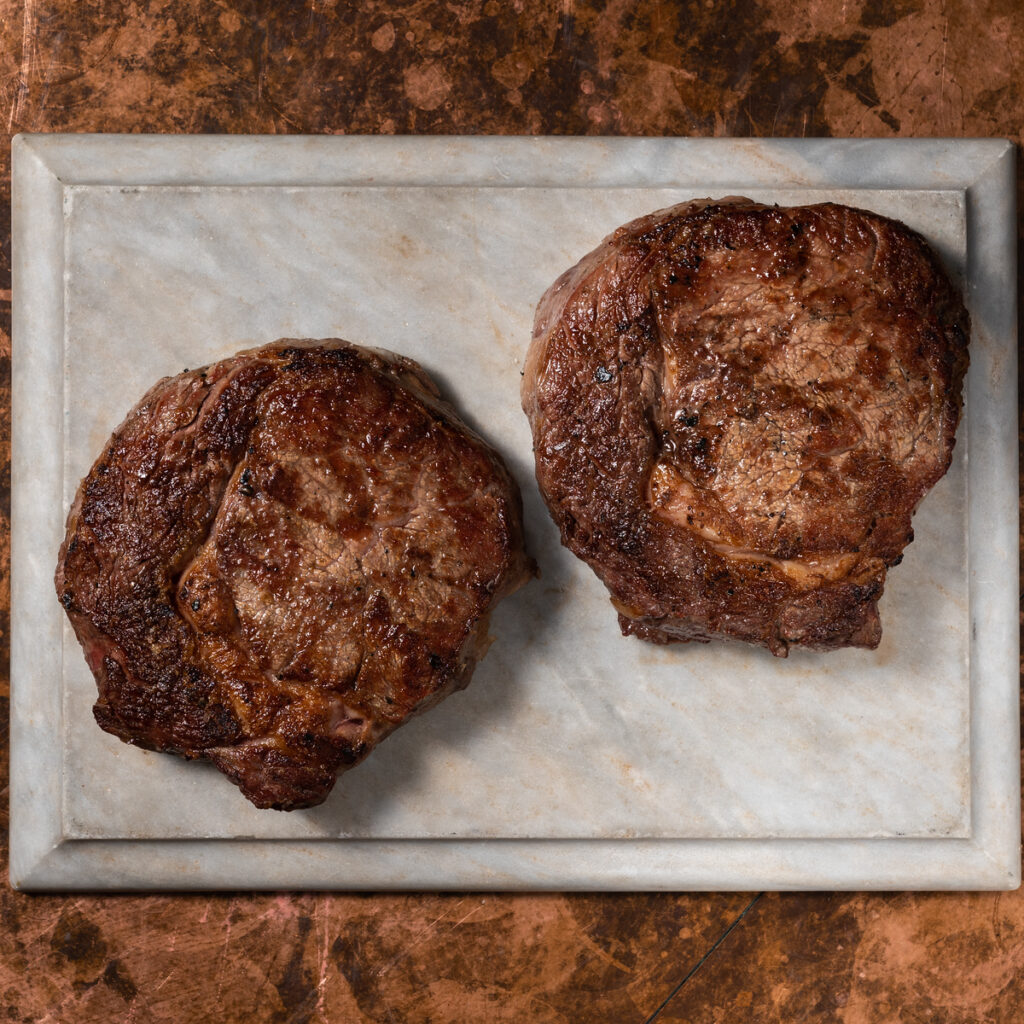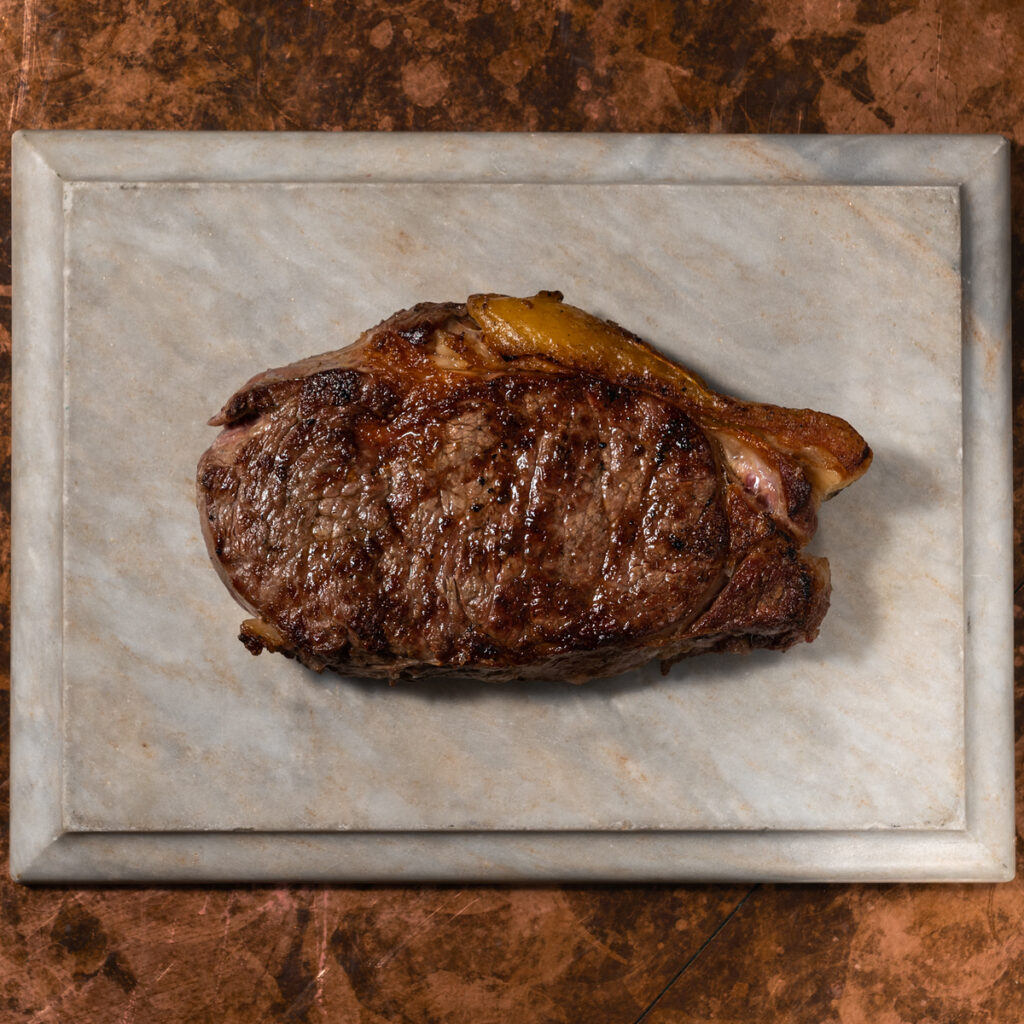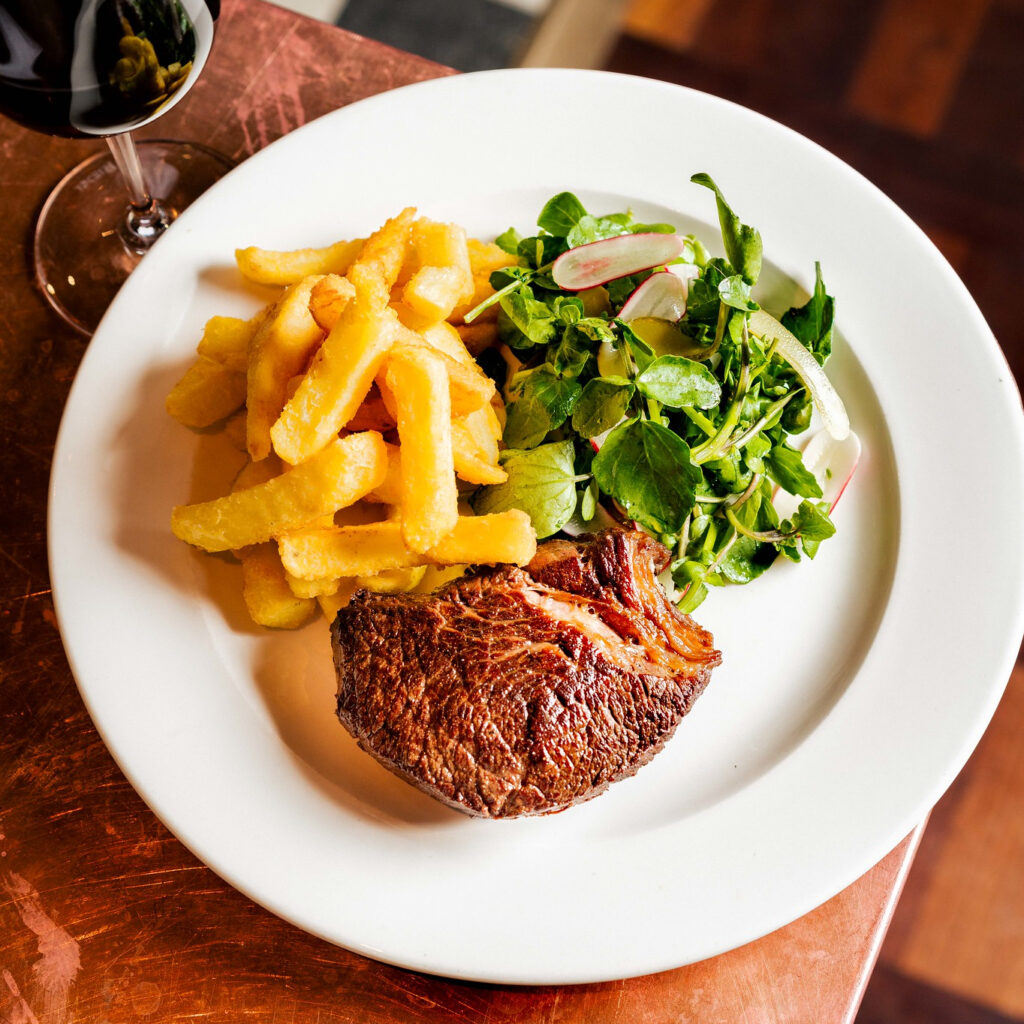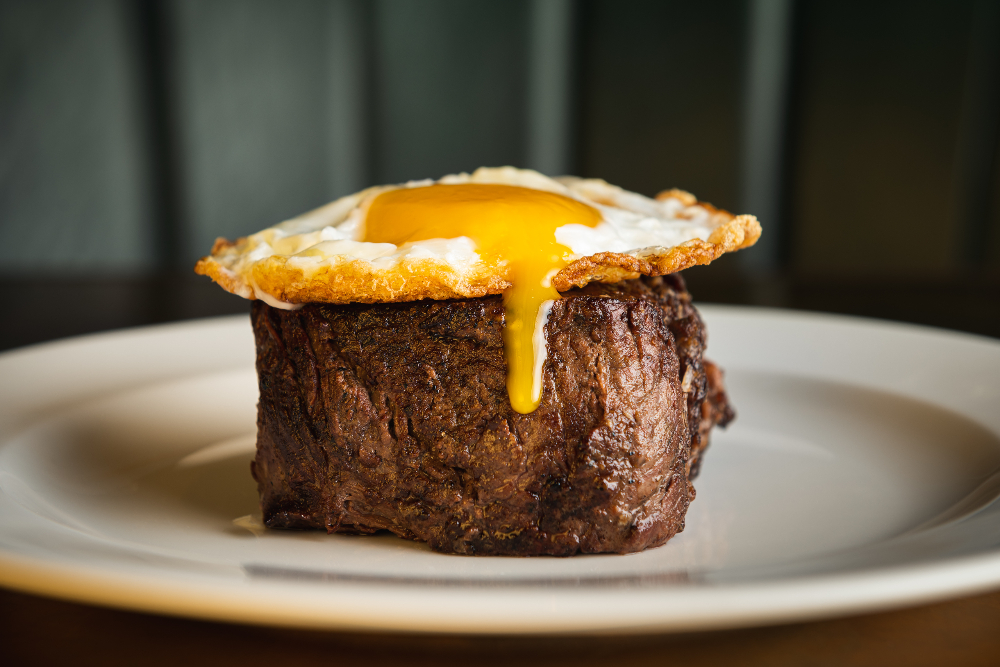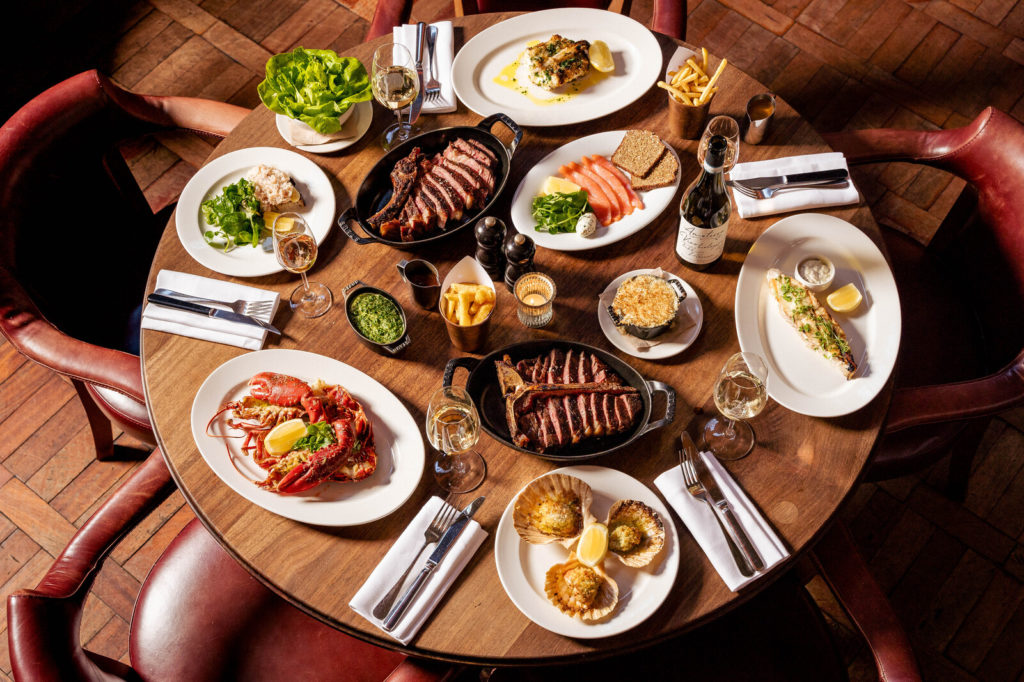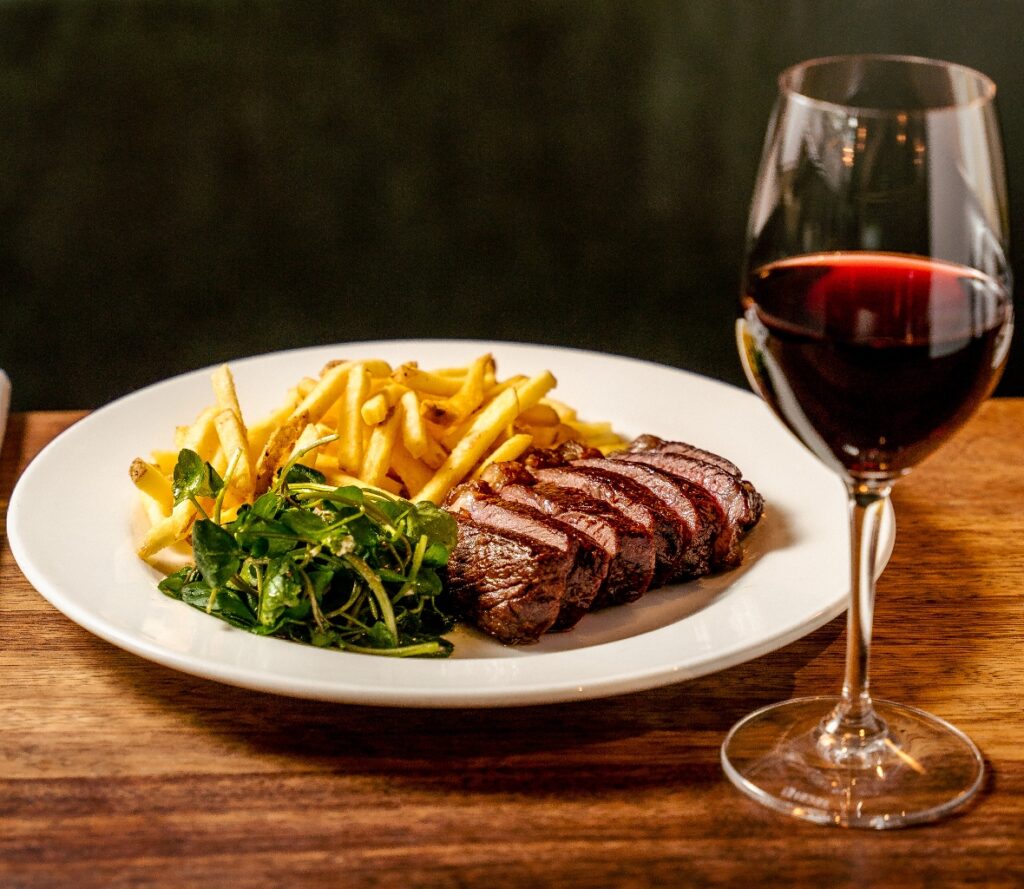
What’s the best wine for steak?
Now that’s an interesting (and not-so-straightforward) question. But don’t worry, Clara Rubin, Hawkmoor’s wine Guru, is here to help.
A good one!
Wine critic (and co-founder Will’s mum) Fiona Beckett says, “It’s just not worth drinking minor wines with steak.”
And she’s right. But, as Fiona will attest, there’s a little more to it than that. To answer, “Which wine?” I first have to ask you, “Which steak?”
Once we know the cut, I then need to know how you’d like it cooked. Because a wine that works for well-done is ruined for rare.
Ready to get geeky? To answer, “Which wine?” I first have to ask you “Which steak?”
The cut of the steak
When one of Hawkmoor’s wine managers is helping you choose the best wine for your steak, they first have to know what cut you want. That’s because each has a different fat content (from juicy to lean) and texture (open or closed figures). And both of these things affect the flavour.
For example…
- Ribeye is very juicy and relatively open-textured
- Sirloin is fairly juicy but tight on the fibres
- Rump is quite lean but very close-textured
- Fillet is as lean and loose as it gets
For low-fat fillet steak, a low-tannin, lighter style of wine would work wonderfully. It doesn’t need much heft behind it. Something like pinot noir (either Burgundy or New Zealand is fine) or Beaujolais (with its soft, fruity gamay grape) would be perfect.
Rump is low fat, too, but you might want to find something a little more robust to compete with those tighter fibres. Something like an oaked chardonnay (yes, white wine works – but we’ll get to that) or a barbera from Northern Italy.
Actually, I shared the porterhouse steak with an old friend recently. I had the soft fillet side and the Elvio Cogno barbera we had matched really well with it.
Anyway, for a fatty ribeye – or even a tight-textured sirloin – you can afford to have much higher acidity and tannin levels in your wines. A ballsy cabernet sauvignon from Bordeaux, say. Or an Aussie shiraz.
The feisty tannins in these wines love salt and fat. It makes them softer, rounder and more easygoing. And because these wines are full-bodied, with lots of ripe-fruit flavours, they stand up to the steak’s big muscles. (Remember that boxing metaphor?)
It’s worth remembering…
…that wine is never going to change the way food tastes. Food will only ever be changed by more food – and more seasoning. But if you get the wrong wine with your dish it will make the wine taste terrible.
It doesn’t stop there. Of course, we have more delicate wines on the list – Pinot Grigio, say – but even those tend to be the most flavourful expression you can find. They’ll go toe to toe with a fine fillet carpaccio, no problem.
Then there’s the char
Blue? Medium? Well done? How you like your steak cooked – the cuisson – will 100% affect which wine is best suited to your dish. The basic rule is that the longer you leave the meat on the grill, the bigger the wine needs to be to match up. We’ll explain why in a second.
First, let’s look at what’s actually going on. High heat, as we all know, creates crust; a sort of caramelisation of the meat. The posh term for it is the Maillard Process. The sugars and amino acids combine and recombine to form a complex assortment of flavour compounds.
Now, all beef contains fat, which brings even more flavours to the mix. And while the surface is browning, the meat beneath is changing. Salty, umami flavours are coming to the fore and, as the cooking time increases, the fibres are tightening.
With all that flavour, fat and salt you’re best off going for a big, bold bottle with plenty of tannins.
Yes, white wine goes with steak
We do big-flavour steak; we need wines that match. When you put a bottle in the ring with our 35-day dry-aged steaks, it has to go round for round. But not everyone likes red wine – the bitterness of those tannins can be a bit much.
That’s where barrel-aged and older (and richer) white wines come in. They work fantastically well with steak. White burgundy – chardonnay – is a classic example, but then southern hemisphere viogniers and semillons are perfect with a righteous rump, too.
A wine for all steaks
Is there any such thing? We think so, yes.
Our house malbec is deliberately blended from a number of different regions in Mendoza, Argentina. Some have a cooler climate and higher altitude, which means they’re lighter, with less jammy fruit flavours. Then there are other, warmer areas – nearer sea level – that produce the opposite.
When skillfully blended, a balance can be found and, with it, some super versatility. And the proof of the pudding… We did a blind taste test last year with our staff – it went with every single cut.
Don’t worry…
…if you forget everything I’ve just said: every wine manager at Hawksmoor knows the rub and has your back. So ask for them when you next pop in and they’ll be delighted to help you choose the very best wine to go with your steak. All you’ve got to do is choose your cut and char. But we can help with that, too.
